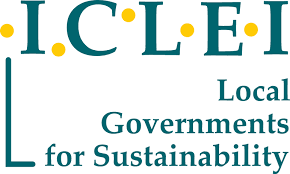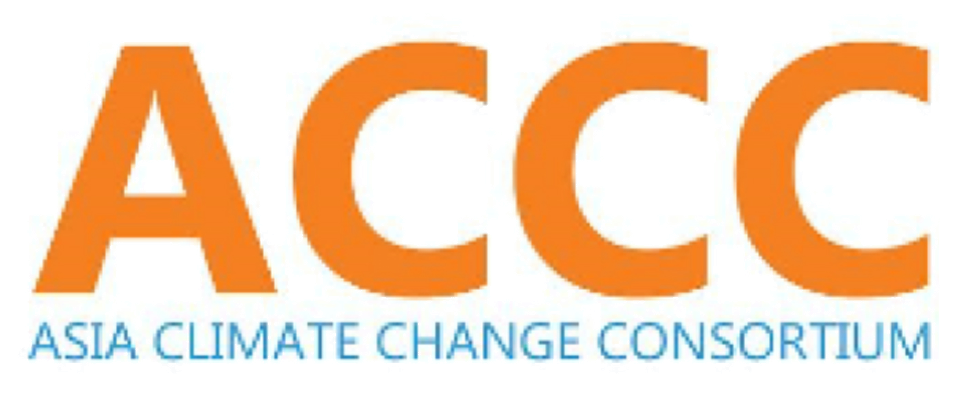Climate change is not gender-neutral. It is a justice crisis rooted in interlocking systems of extraction, exploitation, and exclusion—economic, racial, colonial, and patriarchal—that shape both its causes and impacts. These systems produce and reinforce unequal power relations, restrict access to land, water, housing, finance, healthcare, and decision-making, and criminalize or silence resistance. Across Asia, women, Indigenous peoples, LGBTQIA+ individuals, informal workers, and gender-diverse communities often live and work in conditions of structural discrimination and precarity, facing violence, displacement, and exclusion from climate policymaking. These existing injustices—shaped by social norms and unequal access to power and resources—further exacerbate their vulnerability to climate impacts, even though they contribute least to the problem.
The impacts of climate change intersect with and intensify these existing structural inequalities.
Extreme heat, rising sea levels, floods, droughts, and ecosystem collapse further endanger the lives and livelihoods of women in all their diversity and gender-diverse people, especially those who are landless, engaged in informal work, or reliant on climate-sensitive sectors. Climate disasters increase care burdens, force-displacement, disrupt income sources, and exacerbate gender-based violence, while existing legal, social, and economic exclusions prevent their access to relief, support, and recovery systems.
Yet instead of addressing these systemic injustices, many climate actions being implemented today deepen them.
False solutions—such as inappropriate implementations of geoengineering, carbon markets, nature-based solutions, climate-smart agriculture, large-scale renewables, electric vehicles, and smart cities—are promoted as climate responses. But in reality, they often worsen injustice. These interventions displace communities, erode livelihoods, and impose top-down changes that ignore lived realities. They particularly harm women and gender-diverse people in informal work, caregiving, small-scale farming, and fisheries—whose contributions are systematically undervalued. They intensify unpaid care burdens, reinforce patriarchal control over resources, and sever cultural ties to land, food, and traditional knowledge—stripping people of dignity and decision-making power in the name of climate action and solutions. These false solutions erase Indigenous and traditional knowledge—often held and transmitted by women—and concentrate control over land, water, seeds, data, and technologies in the hands of corporations and central authorities. Meanwhile, climate finance through international and regional institutions entrenches exclusion and centralizes decision-making, bypassing grassroots leadership.
These so-called “solutions” answer the wrong questions: prioritising carbon metrics over justice, technofixes over equity, and profits over livelihoods. By focusing narrowly on emissions reduction without addressing systemic injustice, they distract from real transformation and reinforce the very power structures driving the crisis. Crucially, they fail to reduce emissions at the source—allowing polluters to continue business as usual while communities bear the burden.
Yet across Asia, grassroots women, LGBTQIA+ individuals, and informal workers are restoring ecosystems, practicing agroecology, resisting land and ocean grabbing, building energy sovereignty, and sustaining their communities in the face of crisis. Their leadership, knowledge, and initiatives show what is possible when power is redistributed, accountability upheld, and care and well-being are placed at the centre of climate responses.
Gender justice is not optional—it is central to climate action.
From Gender Mainstreaming to Gender Transformation
This position draws from the realities, knowledge, and struggles of communities and groups in Asia[1]. We call for a shift from symbolic inclusion to structural transformation.
Gender-responsive climate action must go beyond simply adding women to existing systems. It must challenge and change those systems. This means redistributing power and resources, addressing historical and ongoing injustices, and transforming the dominant development model that privileges profit, centralized control, and short-term gains over care, justice, and sustainability.
To realize gender-transformative climate action, we demand that five interconnected drivers of gender transformation be recognized, addressed, and resourced as a matter of justice and urgency. These offer pathways to dismantle systemic injustice and advance equitable responses across adaptation, mitigation, finance, loss and damage, technology, and transition. Redistribution of Resources and Power calls for shifting public climate finance, appropriate technologies, and control away from top-down, market-based systems and toward direct access mechanisms that put resources and decision-making into the hands of affected communities. Women and Community Leadership and Self-determination centre grassroots leadership in policymaking and implementation—ensuring communities lead responses that reflect their lived realities. Feminist Economies of Care and Wellbeing position care work, accessible public services, and universal social protection as core to climate resilience and justice. Accountability and Reparation demand that the Global North meet its obligations through non-debt, grant-based finance delivered via transparent, participatory, and direct access mechanisms—while also leading mitigation at the source and addressing past and ongoing harm. Finally, Intersectional Governance and Decision-making require all climate policies and institutions—from Nationally Determined Contributions (NDCs) and National Adaptation Plans (NAPs) to technology deployment and transition strategies—to embed gender justice, be shaped by frontline knowledge, and uphold inclusive, rights-based participation at every level.
Policy Priorities and Demands
Climate action must address the intersecting systems of oppression that shape people’s exposure to risk, access to resources, and ability to respond to climate impacts. These systems — including discrimination based on gender identity, class, caste, ethnicity, disability, and other social hierarchies — intensify vulnerability for those already excluded and marginalised. Women and gender-diverse people, along with Indigenous communities, informal workers, and other structurally marginalised groups, are not merely passive victims of the climate crisis — they are frontline leaders and knowledge holders. Their lived experiences and collective struggles must guide climate solutions.
Policies must confront structural inequalities, challenge the dominant models of development and climate governance, and prioritise the needs, rights, and leadership of those most affected. The five drivers of gender transformation outlined in this position offer a grounded pathway toward building resilient, equitable, and just climate futures.
1. Redistribution of Resources and Power
- Climate finance must be delivered by the Global North due to their historical emissions and responsibility, as a matter of obligation — not charity. It must be public, grant-based, non-debt, and non-market in nature, and support mitigation, adaptation, responses and compensation to loss and damage, and a just and equitable transition. Climate finance must contribute to systemic change, not reinforce development models that sustain inequality or external control.
- Redistribution of resources also means redistribution of power and control. Climate finance must reach those most affected — women in all their diversity and gender-diverse people, informal workers, Indigenous peoples, and other structurally excluded groups — through direct access mechanisms that shift decision-making into community hands. Intermediaries such as multilateral development banks (MDBs) and international financial institutions (IFIs) must be phased out where they obstruct access or reinforce exclusion.
- Intersectional gender analysis and gender-responsive budgeting must guide all climate finance instruments to ensure resources meet diverse needs and dismantle systemic gaps.
- False solutions—such as inappropriate implementations of specific technologies (geoengineering, carbon trading, climate-smart agriculture, nature-based solutions, smart cities, and large-scale renewables)—must be rejected. They displace communities, reinforce extractive systems, and fail to reduce emissions at source. Instead, climate finance must prioritise inclusive, care-centred, and community-led responses across adaptation, mitigation, just and equitable transition, and responses and compensation for loss and damage.
2. Women and Community Leadership and Self-Determination
- Women in all their diversity and gender-diverse people must be recognised not only as vulnerable groups but as knowledge holders and leaders in climate action. Their leadership must be guaranteed in decision-making spaces at all levels—from community-based climate planning to national policy forums and global climate negotiations.
- Governments must institutionalize this leadership through the development and full implementation of National Gender and Climate Action Plans, linked to NDCs, NAPs, and climate finance strategies. These plans must include measurable targets, resourced implementation, and meaningful participation by affected constituencies across all stages—from design to monitoring.
- Frontline and grassroots communities must be empowered to lead in shaping and implementing strategies across adaptation, mitigation, just and equitable transition, loss and damage responses, and climate technologies. This requires long-term, flexible funding and technical assistance that supports collective self-determination and local innovation.
- Across Asia, women and gender-diverse people are already advancing community-rooted approaches—from agroecology, seed sovereignty, and traditional fisheries, to energy democracy, disaster response, and informal workers’ organizing. These practices not only protect ecosystems and livelihoods but also build local resilience and contribute to emission reductions while reclaiming autonomy over food, energy, and knowledge systems.
3. Feminist Economies of Care and Wellbeing
- Adaptation and resilience must center care systems—not as secondary needs, but as core infrastructure for surviving climate shocks. This includes accessible, affordable, and inclusive healthcare (mental, physical, psychological, sexual, and reproductive), child and elder care, disability support, maternity protection, and gender-sensitive ergonomics — such as tools and equipment designed for women’s physical needs. These systems are not luxuries; they are lifelines during heatwaves, floods, displacement, and public health emergencies.
- A truly just and equitable transition goes beyond simply switching from fossil fuels to renewable energy. It must encompass all sectors of the economy — including care work, agriculture, manufacturing, and informal labour — and be grounded in the principles of a feminist caring society. This means placing social and gender justice at the centre, promoting ecological balance, recognising and valuing unpaid and underpaid care work, and ensuring that the transition leads to redistributive outcomes rather than reproducing existing inequalities.
- Care work — both paid and unpaid — forms the backbone of all societies, yet remains chronically undervalued and invisible in climate policy and economic systems. A feminist caring society must guide how we reimagine work, livelihoods, and well-being in the face of the climate crisis. It reframes development through the lens of equity, dignity, and interdependence. We call for care work to be fully recognised and resourced as climate infrastructure, with dedicated investment, protections for care workers, and redistribution of unpaid care burdens.
- Care infrastructure—both material (e.g. clinics, shelters) and relational (e.g. caregiving networks)—must be recognised as essential to climate response. Feminist economies of care affirm that wellbeing, dignity, and interdependence are critical to climate justice — not profit or productivity.
- Social protection must be expanded, universalised, and grounded in climate realities — especially for informal workers, migrants, and marginalised gender groups — whose incomes and safety nets are most vulnerable to climate disruption. This includes portable benefits, climate-responsive cash transfers, paid leave, and protections for domestic and care workers.
- Public services and infrastructure — such as clean water, energy, transport, and sanitation—must be designed to support collective wellbeing and climate resilience, not just economic growth. These services must be public, decentralised, non-commercialised, and accessible to all regardless of gender, class, occupation, or legal status.
4. Accountability and Reparation
- The Global North must fulfil its obligation to deliver climate finance in line with its historical responsibility for emissions and climate harm. This finance must be public, grant-based, and non-debt-creating — to support mitigation at the source, adaptation, responses and compensation for economic and non-economic loss and damage, and just and equitable transitions across all sectors. It must not be treated as charity or investment, but as reparation for the harm inflicted by centuries of extraction and pollution, and to enable countries in the Global South to build resilience and undertake systemic transitions — including shifts in energy, food, transport, and care systems, using appropriate, community-led technologies. This is not only a financial obligation — it is a matter of accountability for past and ongoing harm that continues to shape climate vulnerability and injustice today.
- Climate finance must be governed with transparency and justice, and be accountable to the communities it is meant to serve — especially women in all their diversity and gender-diverse people, who face the greatest barriers to access. Yet current systems — where funds are channeled through international financial institutions and multilateral funds — often obscure where money goes, who makes decisions, and whether harms are addressed. They consistently fail to reach frontline communities. Gender-responsive governance must be embedded — where affected communities can track funding flows, influence priorities, and hold decision-makers to account. In addition, intersectional gender analysis must be applied at every stage — from funding design and allocation to implementation and impact evaluation — to expose and correct structural inequalities.
- Accountability must extend across all areas of climate action—not only finance, but also mitigation, adaptation, loss and damage, and just and equitable transition pathways. Women in all their diversity and gender-diverse people — who are often excluded from decision-making — must be empowered to lead in tracking, questioning, and reshaping climate responses that impact their lives and communities. Gender-responsive governance must go beyond consultation to embed the leadership of structurally marginalised groups in all systems of oversight and redress, including grievance mechanisms, community-led monitoring, and participatory review processes.
- True accountability means confronting the ongoing harm caused by false solutions — which must be rejected. These schemes violate rights, displace communities, and fail to reduce emissions at the source. When climate finance continues to fund them, it reinforces the very systems of injustice it claims to solve. Climate reparation means paying the debt — not through charity or profit-driven schemes, but through public, grant-based finance that reaches the communities most affected. It means ending the cycle of harm and redirecting funds to rights-based, community-led solutions that repair damage, uphold justice, and build resilience.
5. Intersectional Governance and Decision-Making
- All climate policies must be grounded in intersectional analysis — recognising how overlapping systems of oppression, including gender identity, race, class, caste, ethnicity, ability, and occupation, shape exposure to climate risks and access to solutions. Women in all their diversity, gender-diverse people, Indigenous peoples, informal workers, and other structurally excluded groups must be recognised not only as vulnerable, but as essential actors in climate governance and decision-making.
- Gender-responsive and transformative principles must be embedded across all pillars of climate governance — adaptation, mitigation, finance, technology, loss and damage, and just and equitable transition. These principles must shape institutional mandates from the outset—not be treated as secondary or symbolic.
- Gender transformation requires shifting institutional cultures, planning processes, and funding frameworks to reflect the lived realities, leadership, and priorities of frontline communities. This also means dismantling the structural barriers that exclude marginalised groups from governance—including legal, linguistic, digital, safety, and resource constraints. Governance systems must be reformed to redistribute power and uphold rights—not just participation on paper.
- The recently extended Lima Work Programme on Gender must be urgently and meaningfully developed, finalized, and implemented. This includes commitments to generate and use intersectional gender data, sustain accessible capacity-building, reform institutions, and protect gender justice defenders—especially where civic space is shrinking.
- NDCs, NAPs, National Gender and Climate Action Plans, and other frameworks must be co-created with frontline communities and made substantively accountable to them. This accountability must be reflected in outcomes, targets, financing, and implementation—not only in consultation.
Governance at all levels—local to global—must guarantee safe, inclusive, and sustained participation. Affected communities must be fully resourced and empowered to shape the decisions that determine their lives and futures. Intersectional governance is not a procedural ideal; it is the foundation of climate justice.
[1] This position is derived from discussions and consultations among ACCC members in 2025, who are working with diverse constituencies and groups across Asia.





 c/o Rice Watch Action Network
c/o Rice Watch Action Network